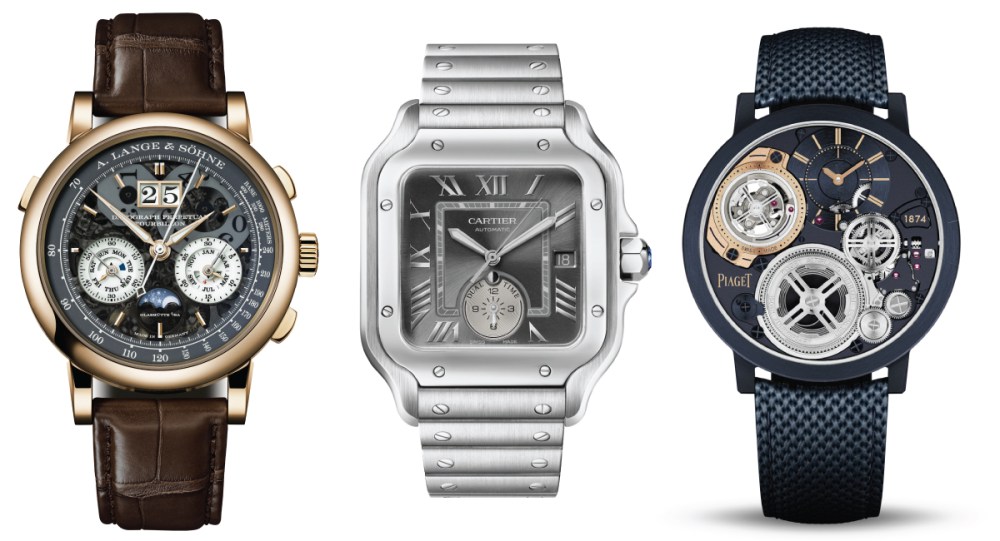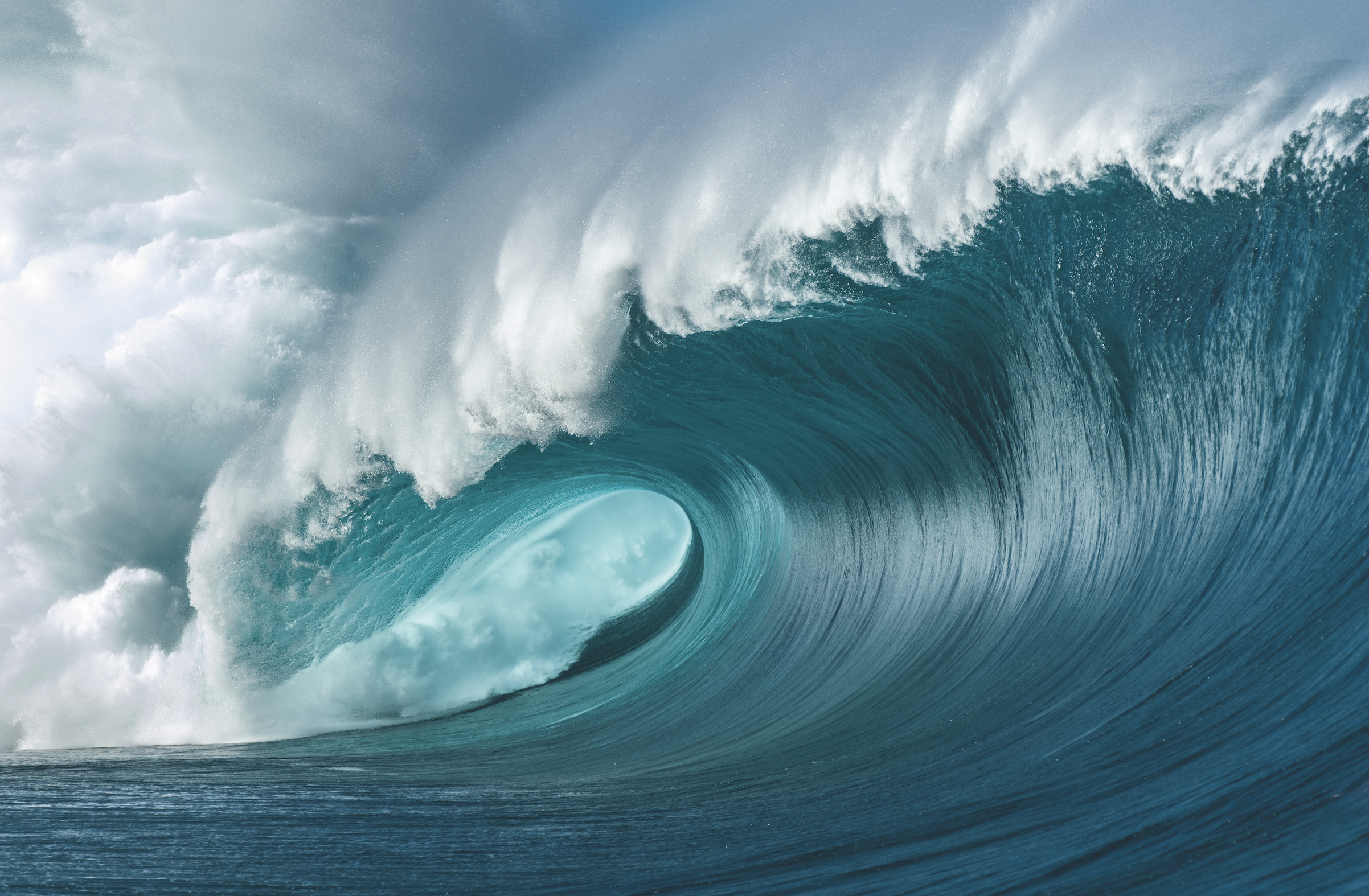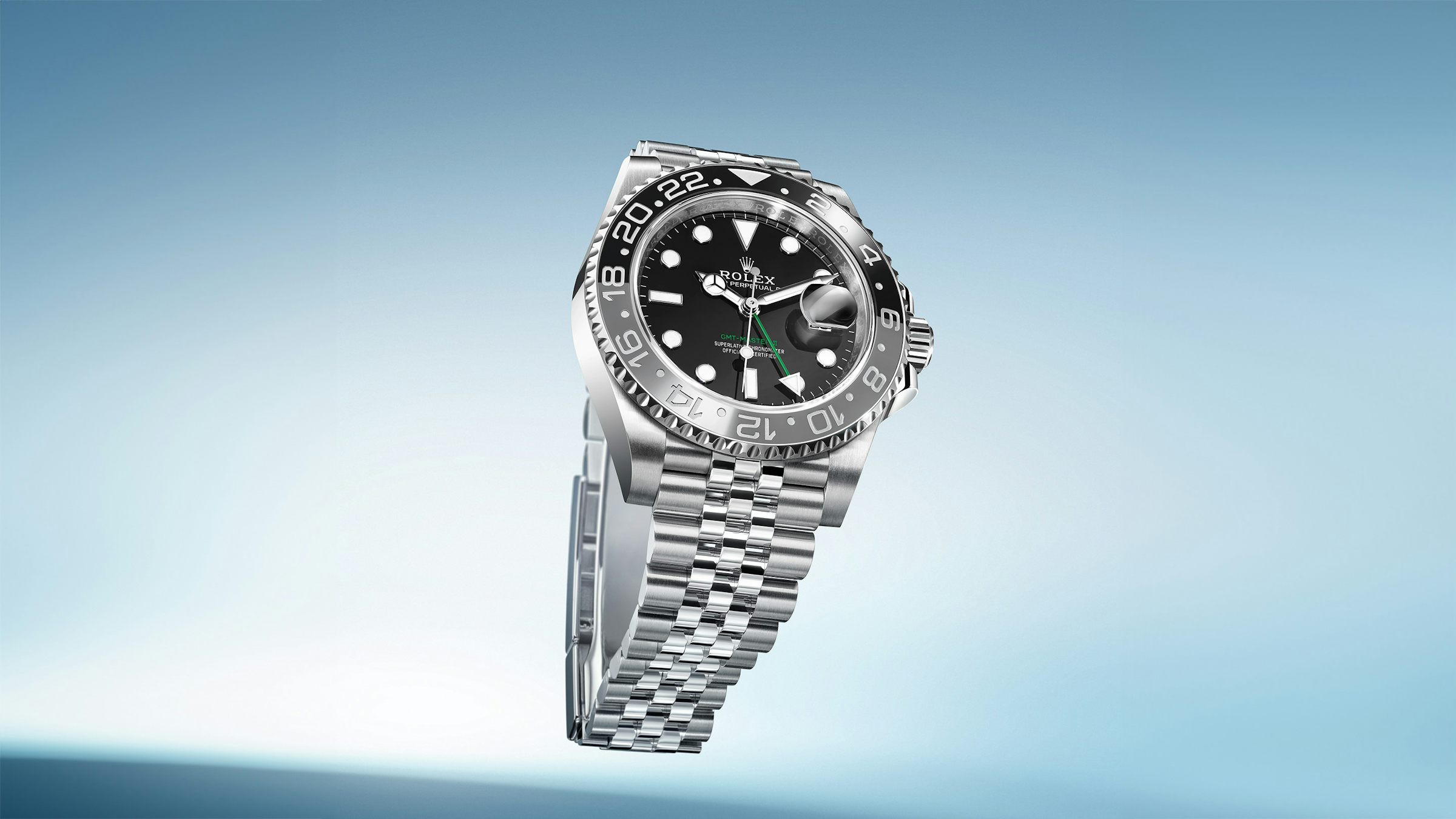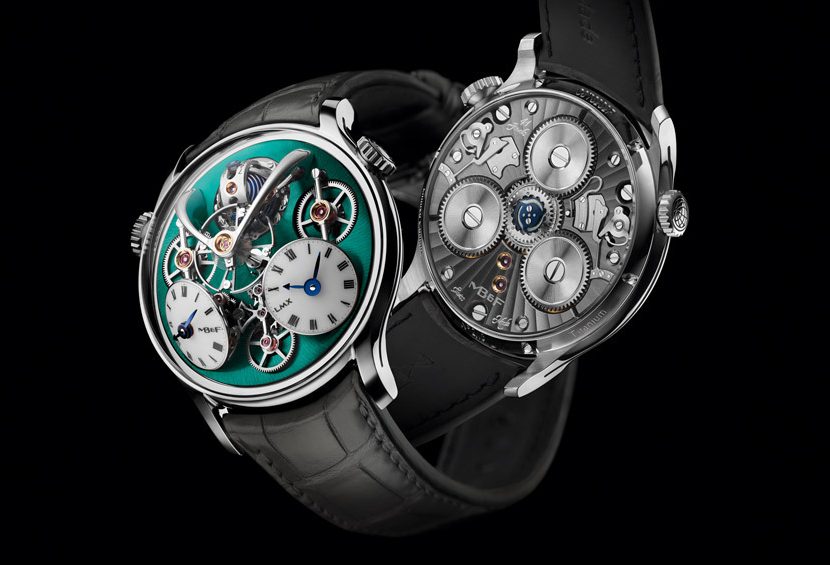
MB&F Celebrates 10 Years Of Its Legacy Machine
With two new souped-up versions of its landmark timepiece.
Related articles
When avant-garde independent watchmaker MB&F debuted its first Legacy Machine watch in 2011, founder Max Büsser considered its conventional case shape and more traditional layout a risk. The brand, established in 2005, had made its name creating highly complicated, other-worldly designs that looked unlike anything else on the market.
But despite their more classical leanings, the Legacy Machine watches still looked like something plucked from outer space. And they opened a new realm for the brand as a more wearable offering for those not quite ready to take a plunge on out-there pieces like the spaceship-style case of the HM4 Thunderbolt or the flying saucer-shape of the HM1. The LMs were a success not just with clients, but with the industry at large. Büsser and his collective of mad scientist watchmakers won four Grand Prix d’Horlogerie de Genève awards (the Oscar’s of watchmaking) for the mechanical marvels.
To celebrate a decade of its more earthly inhabitant, MB&F created the LMX (Legacy Machine 10), which marks the company’s sixth fully conceived in-house movement. It employs the same central flying balance wheel and double dials as the early LMs, but this time around they are tilted at an angle like more recent versions such as the brand’s recent collaboration with fellow indie H. Moser & Cie. Both in white lacquer, the dial on the right is set by the crown at the 2 o’clock position (which also winds the piece), while the second crown at 10 o’clock sets the second time zone present on the left dial.

MB&F LMX in 18-carat 5N Red Gold Courtesy of MB&F
Also in keeping with later models, like the LM Perpetual, LM FlyingT (Robb Report‘s Best of the Best winner last year for Best Women’s Watch of the Year) and LM Thunderdome, the dial plate exposes more of the engineered fireworks beneath the sapphire crystal dome. Visible on the wrist is the battle-axe-styled escapement bridge, gear-train components, and three large wheels (two of which are set in motion when setting the time and the other, at 6 o’clock, moving in conjunction with the common seconds function). What’s brand new is the 13.4mm bespoke balance wheel with inertia block instead of traditional screws, offering greater accuracy, and polished arms on the straight bridges that have been finished to create a curved profile on their surface.

MB&F LMX in 18-carat 5N Red Gold Courtesy of MB&F
But one of the coolest new features, which even untrained horological eyes can appreciate, is the unique power reserve display (visible at what would be 12 o’clock on a conventional timepiece), which builds on the world-first vertical indicator of the LM1, but pumps it up with a 3-D display to showcase a massive 168 hours of run time. Depending on how you look at the watch on the wrist, you can read the indication two ways: If you’re wearing the piece and reading the two white lacquer dials to tell the time then you can read the power reserve in days-of-the-week markers via a blued marker. But if you’re viewing it from the top (the left side of your wrist if you wear the watch on your left hand) the reserve is read in a scale of one to seven for the number of days until the power runs out.

MB&F LMX in Titanium Laurent Xavier Moulin
But that’s not all. The entire power reserve display rotates so that the owner can choose to wear the display to the orientation of their choosing. That means, if you prefer the number of days to be more visible, facing towards the white lacquered dials instead, you can simply continue to wind the battle-axe crown after the power reserve has been replenished and the entire indicator will rotate to the desired location. As far as horological toys go, that’s one hell of a party trick.

MB&F LMX Caseback Courtesy of MB&F
For those that also like to show off the flip side, the sapphire-crystal caseback reveals three barrels, arranged in the centre, surrounded by a sunray Côtes de Gèneve finishing.
As you might imagine, given the nature of this showpiece, you should add about five more Xs to the LMX name when factoring in price. It comes in an 18-carat 5N red-gold case with a black NAC dial (limited to 18, approx. $168,000) and a grade 5 titanium case with a blue-green CVD dial (limited to 33, $147,000). You can find them both online now at MB&F’s e-shop, but you will have to put your name on the waitlist first before you are approved for purchase.
Subscribe to the Newsletter
Recommended for you
The Boldest, Most Exciting New Timepieces From Watches & Wonders 2024
Here are the highlights from the world’s biggest watch releases of the year.
Patek Philippe Brings Back Collector Favourites at Watches & Wonders 2024
Both the Nautilus Chronograph and Aquanaut Travel Time receive a welcome return.
By Josh Bozin
April 10, 2024
You may also like.
By Jay Cheses
17/04/2024
You may also like.
Don’t Ride This Wave ….*unless your name is Robinson, Slater or Moore.
The 2024 Olympic surfing comp will be held at Tahiti’s treacherous Teahupo’o. Going for gold could be deadly.
It’s day two of the 2023 Tahiti Pro Surf Competition. I’m perched on the roof of a VIP boat around 100 metres from Teahupo’o, one of the world’s most dangerous waves. American Surf icon Kelly Slater has just been swallowed by a heaving wall of turquoise water. I’m so close to the action that when he’s finally spit out from the ride, my face gets misted in ocean spray. Below me, Australian Jack Robinson, who will go on to win the event, sits on the edge of the boat performing breathing exercises ahead of his heat. Around me, a flotilla of kayaks, jetskis, surfboards, and small vessels bobs in the channel, acting as a floating stadium for fans.
For many of the competitors—and the 1,400-odd residents of the wave’s namesake village—this year’s contest is a dress rehearsal for an event with a far larger global profile in a few months’ time. While many of the world’s top athletes will travel to France in July for the 2024 Paris Olympic Games, the most talented surfers will head here, to the southwest corner of Tahiti island’s small peninsula, Tahiti Iti, to vie for gold at Teahupo’o in just the second surf competition in Olympic history.
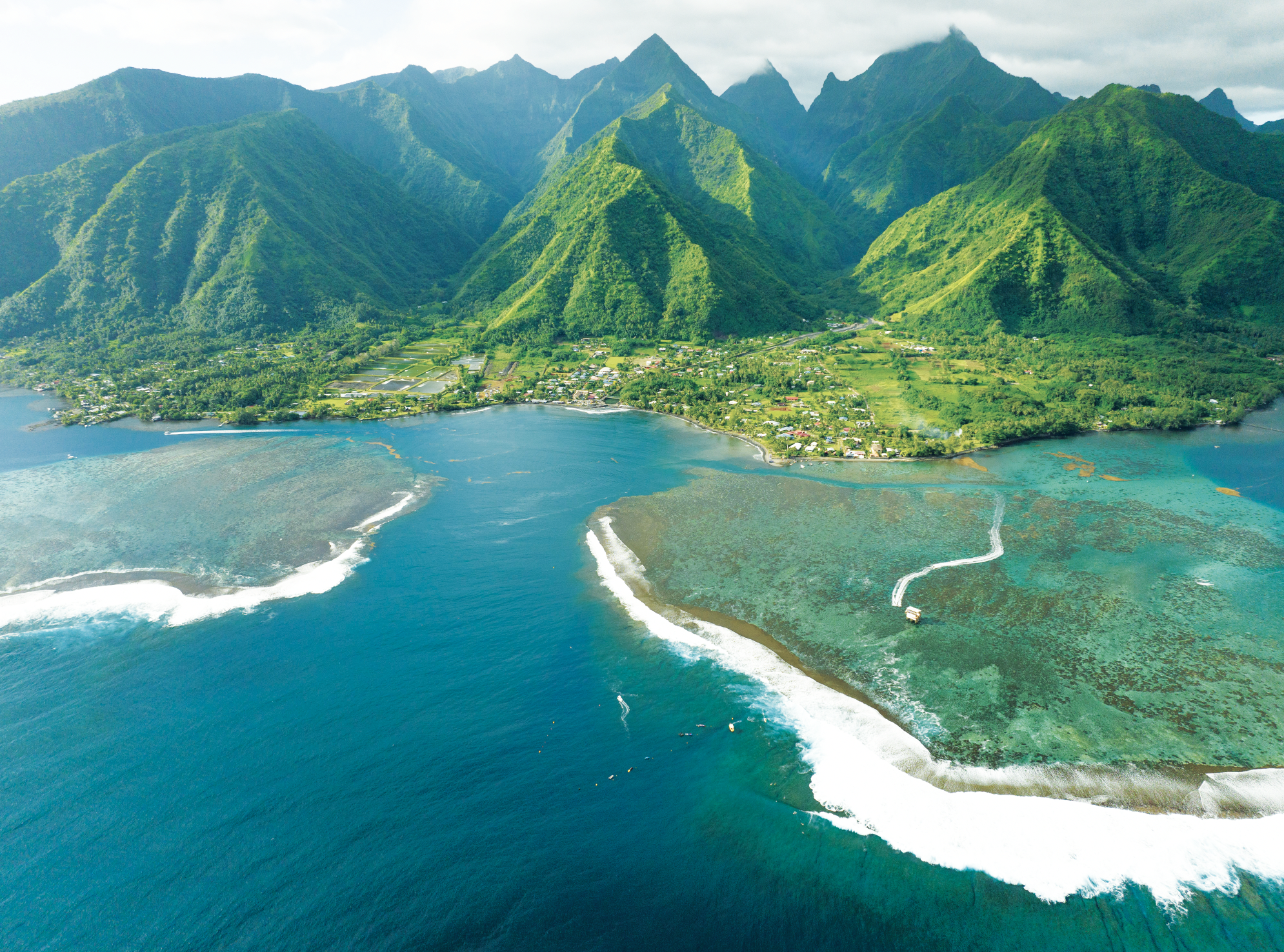
In keeping with the limit of two surfers per gender, per nation, the Australian flag will be flown by Ethan Ewing (No. 2 in the World Surf League rankings at the time of writing) and the aforementioned Robinson (No. 5) in the men’s category, and Tyler Wright (No. 3) and Molly Picklum (No. 5) in the women’s. On this form, hopes of a homegrown medal haul are high.
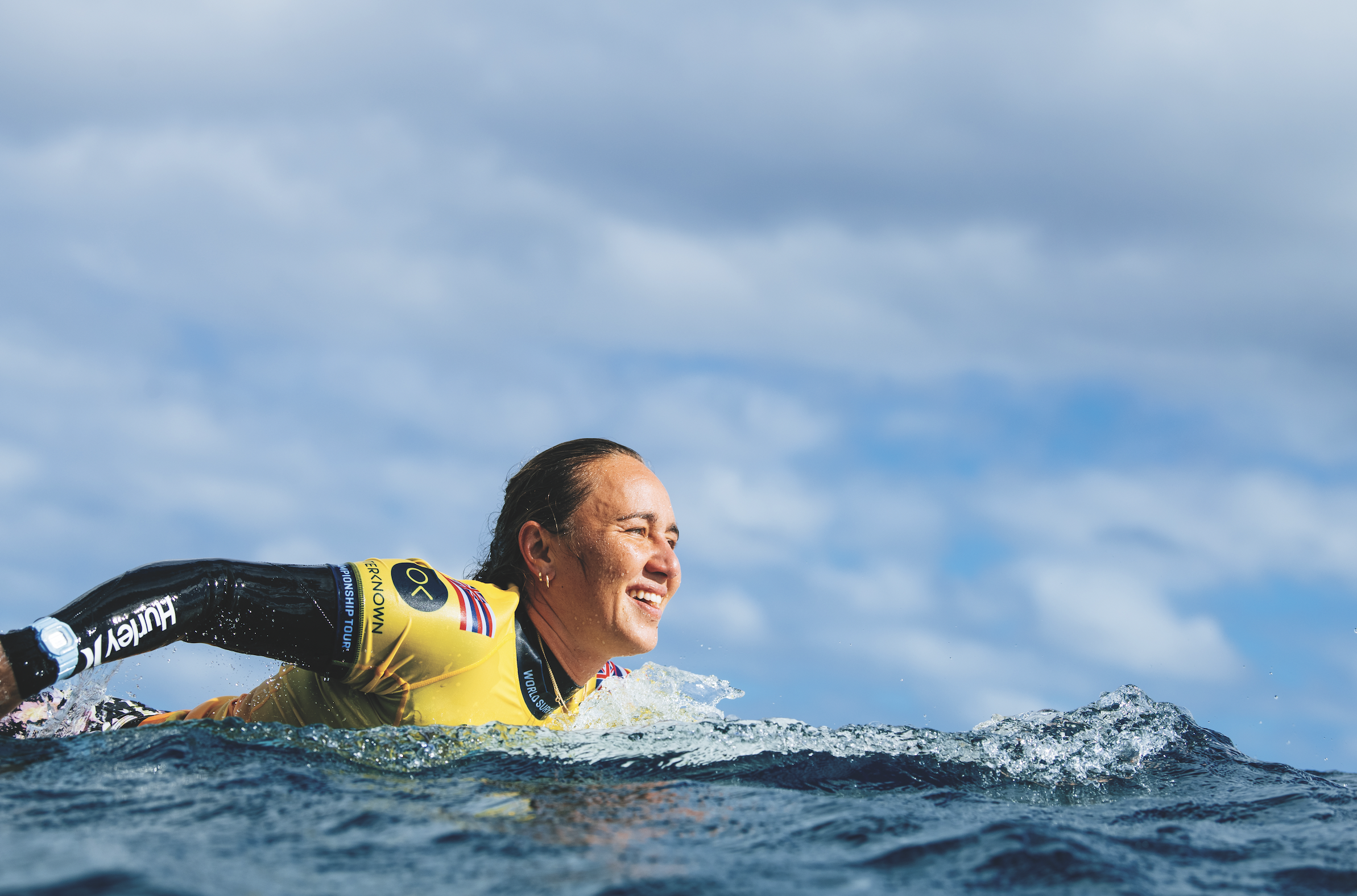
Olympic officials could have chosen a site off the coast of France, such as the surf towns of Biarritz or Hossegor, but historically, Mother Nature brings more sizable waves to Tahiti at this time of year. Plus, surfing has deep cultural ties to the region. The sport originated in Polynesia and dates as far back as the 12th century; it was practiced by Polynesian royalty. Teahupo’o is also a world-class wave that challenges the mental and physical prowess of even the most experienced competitors. The high risk of surfing this spot guarantees thrills that officials anticipate will boost viewership.
Located in the gin-clear waters of the South Pacific with a background of mountains that appear to be draped in jade-green crushed velvet, Teahupo’o (pronounced TAY-a-hoo-poh-oh) is one of the sport’s most infamous swells. (Its name loosely—and cheerily—translates to “place of skulls”.) According to Memoirs of Marau Taaroa, Last Queen of Tahiti, printed in 1893, the first person to surf it was actually a woman from the island of Raiatea, in the 19th century. Not until the 1980s did anyone dare attempt it again, with the first competition hosted in the late 1990s. Former pro turned filmmaker Chris Malloy has called it “the wave that has changed surfing forever”.
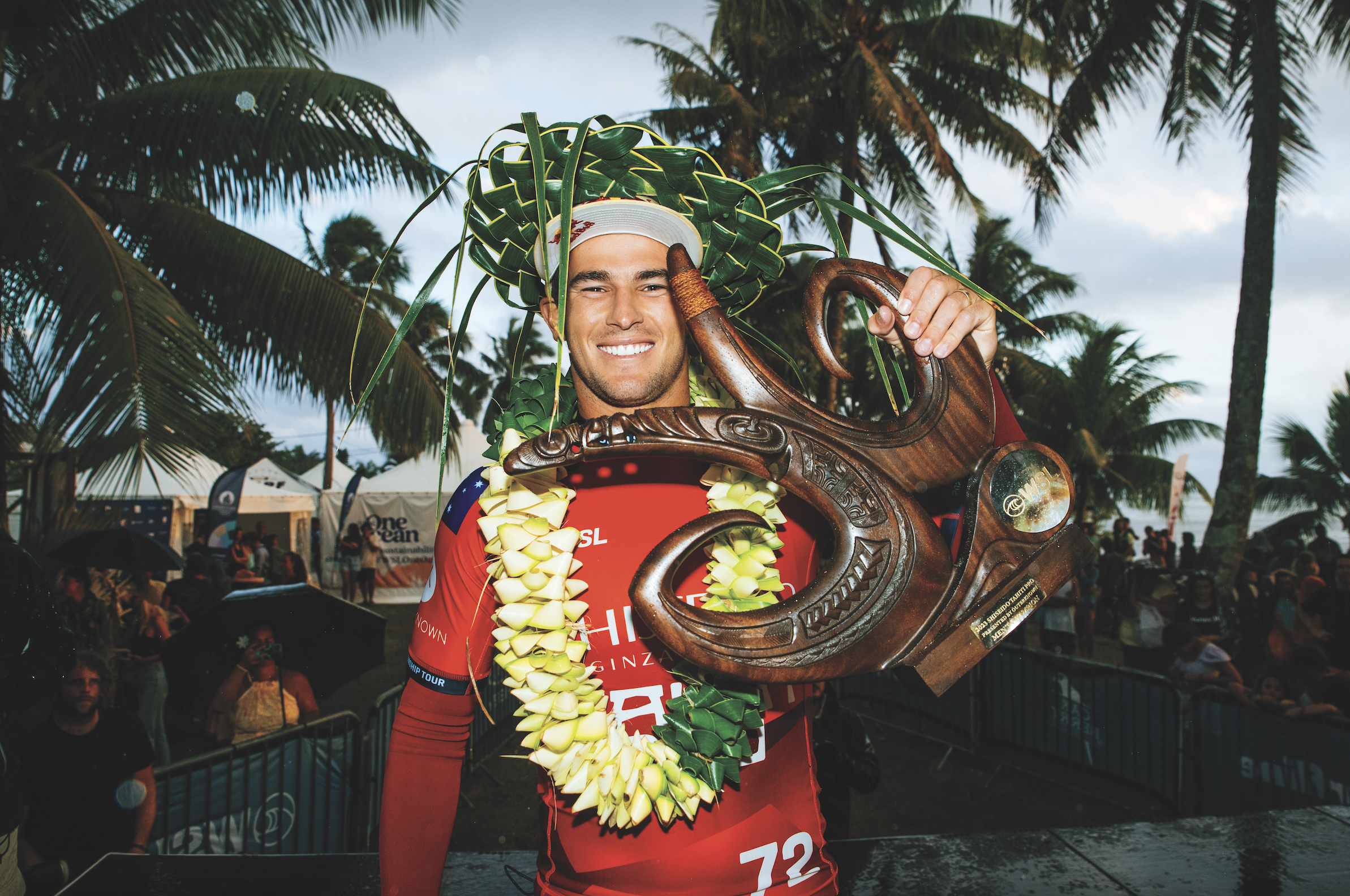
In the right conditions, Teahupo’o can tower upwards of six metres. That may sound small compared to the monster-size Jaws in Maui or Nazaré in Portugal—which can climb as high as 25 metres—but it’s not the height that makes Chopes, as the wave is lovingly called, so special. It’s the weight. When surfers describe a wave as heavy, they’re referring to its combination of a thick lip (the powerful section that starts to curl over) and the amount of water surging behind it.
Like most of the surf breaks found throughout French Polynesia, Teahupo’o is a reef break, meaning the water spills over the surface of knife- sharp coral. Chopes is unique because around 50 metres beyond the reef, the ocean drops more than 15 metres. As swells come toward the shore, the transition from deep water causes them to jack up over the coral before quickly crashing down with tremendous force.
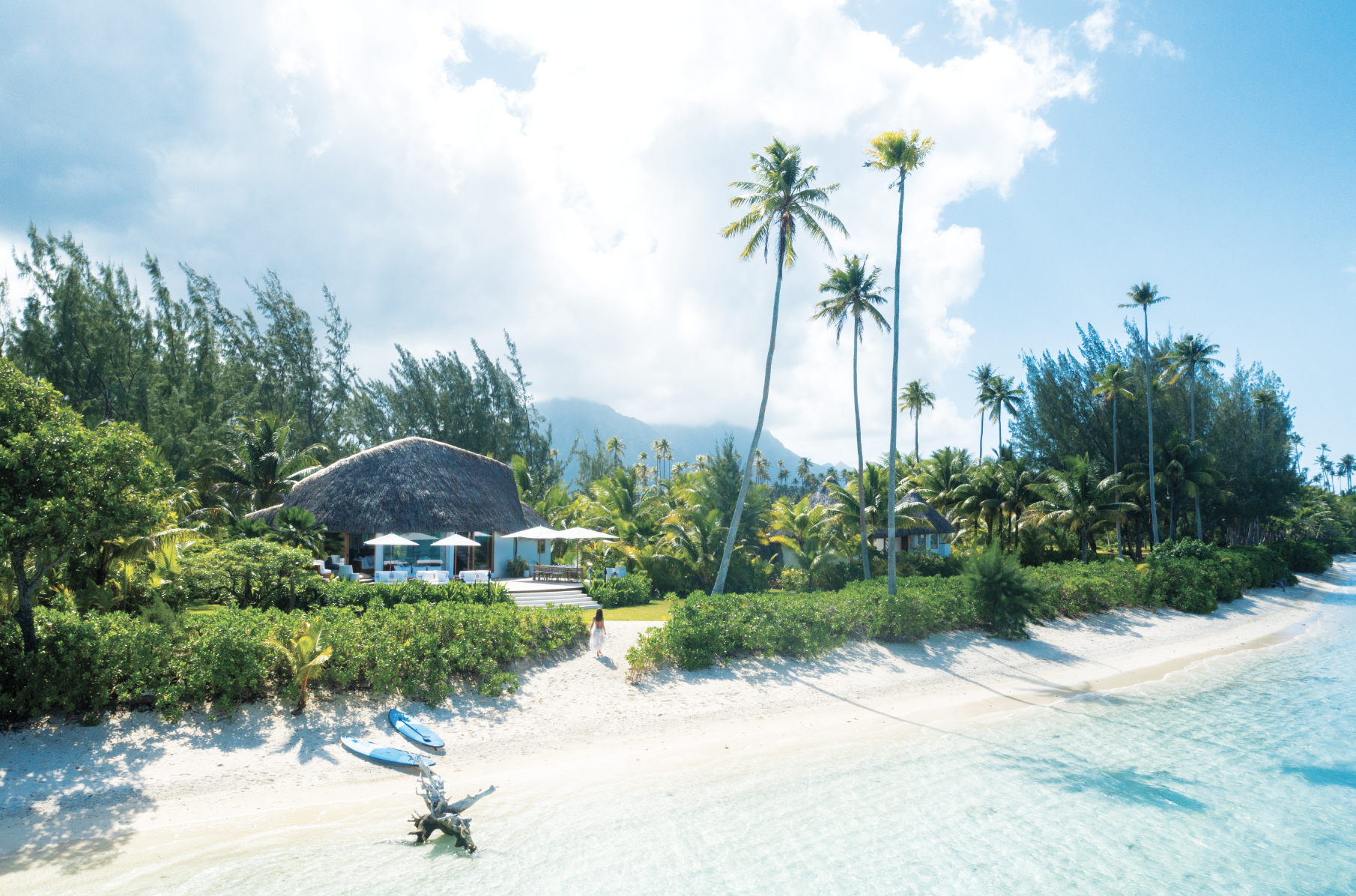
“The reef evolved perfectly in order to absorb the wave’s energy in the shortest distance possible to create this natural wonder,” surf superstar Laird Hamilton tells Robb Report. “It’s a wave that stands straight up and creates a huge barrel. It’s one of the greatest waves on Earth.” In 2000, Hamilton rewrote surfing history when he rode what has been dubbed the Millennium Wave here. Up until then, Teahupo’o was considered too perilous to attempt when it reached a certain size. Hamilton, a pioneer of tow surfing, had a jetski pull him into what is still considered one of the heaviest waves ever ridden. Surfer magazine published a memorable cover of him getting barrelled with just the words “Oh my god…” because the feat was so dangerous.
In places, the reef lurks just 50 centimetres beneath the water’s surface, and the lip can act like a liquid guillotine if it clamps down before a surfer exits the hollow tube of the wave, known as the barrel. Had Hamilton wiped out, he wouldn’t have had an escape route.
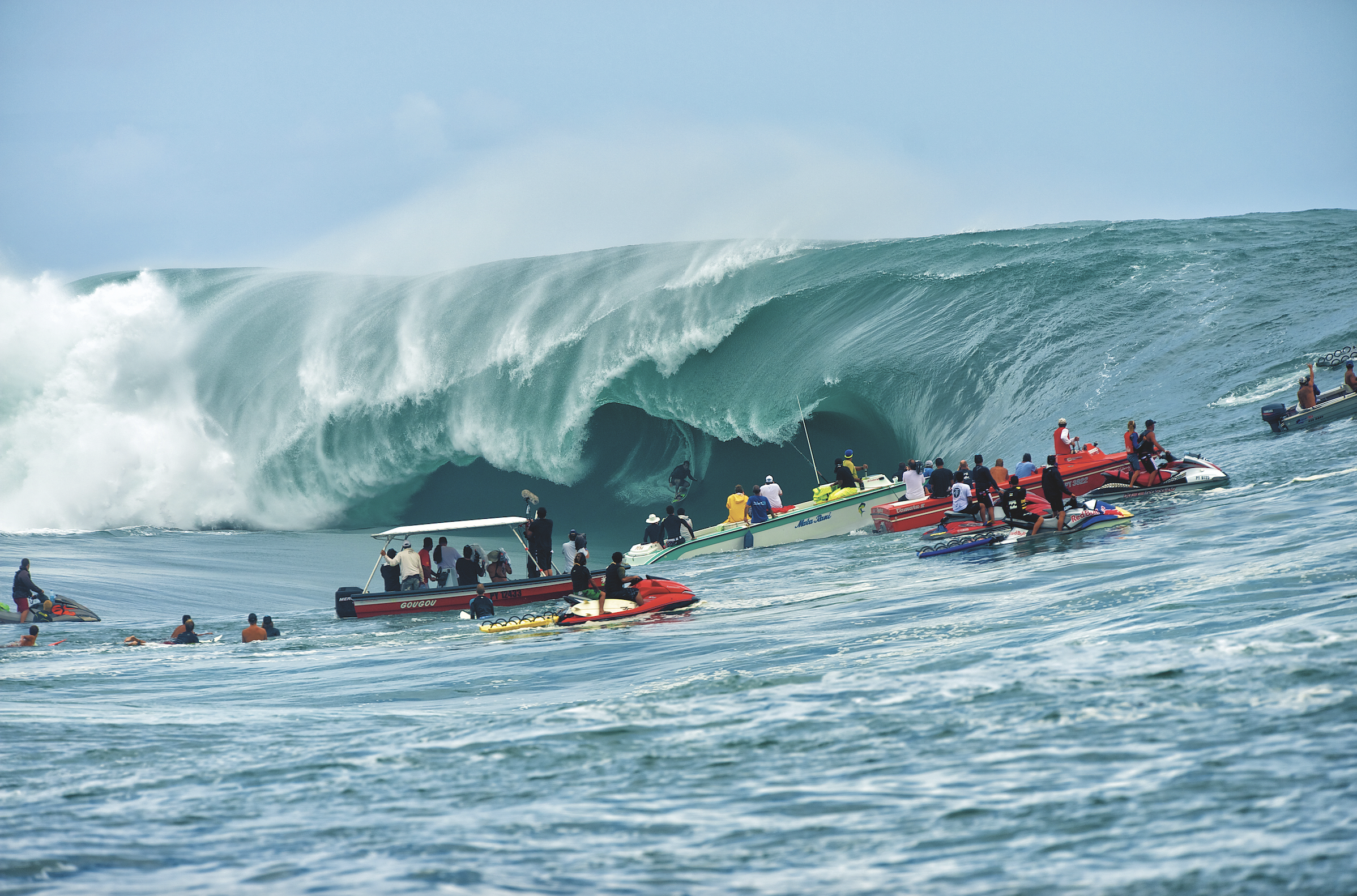
I’m an avid amateur surfer and live on Maui part-time to take advantage of Hawaii’s waves, but even on a gentle day, I wouldn’t attempt Teahupo’o. Teahupo’o village has a water-safety patrol that watches over athletes during contests. Still, a handful of surfers have lost their lives here, and many go home with serious battle wounds. In August last year, during a practice session for the Tahiti Pro, Ethan Ewing fractured two vertebrae in his back after crashing out in solid, but average, six-foot waves—an accident that arguably cost him top spot in the world rankings.
In classic gung-ho-surfer fashion, though, the Queenslander was back in the water at Teahupo’o three months later, one eye still resolutely fixed on Olympic glory. “Definitely more anxious than excited heading back to Tahiti after hitting the reef really hard last time,” he posted on his Instagram account. “Teahupo’o is still seriously intimidating, but I feel like I’ve made some steps in the right direction.”
Unless you surf, Tahiti Iti probably isn’t on your radar. Starting from the largest town of Taravao, the south-coast road ends at the village of Teahupo’o, hence its nickname, the End of the Road. The community, just 500 metres from the wave, is the antithesis of the glitz and glamour of Paris or even nearby Bora Bora. This is a slice of tropical paradise that has somehow evaded development. To reach the contest each day, I park at the end of the road, then walk over a one-lane bridge and follow a sandy path that passes local homes.
“All of your senses are heightened here,” former world surf champion C. J. Hobgood tells me when I run into him at the event. “It’s not just the wave—it’s the island. Everything looks five- dimensional. Mountains seem stacked on mountains and glow a vivid green. You turn to the right and these bluer-than-blue waves are breaking. Then a rainbow might appear in the sky. The raw beauty is overwhelming to take in when you first arrive.”
Surfers talk of feeling the mana, a Polynesian word for spiritual energy, here. Jack Robinson even referenced it after his victory in the Tahiti Pro. It may sound woo-woo, but I undoubtedly feel something when I arrive after a 90-minute drive south-west from the hotel-lined harbour of Tahiti Nui, the island’s larger, more developed area. Tahiti Iti’s empty beaches and waterfall-riddled lush interiors remind me of a quieter, more vibrant version of Hana, a little corner of Maui with just one hotel, a handful of restaurants and kilometres of untamed nature. In an era of over-tourism, this kind of purity comes with a trade-off: You won’t find five-star hotels or celebrity-chef restaurants on Tahiti Iti. In fact, it doesn’t have any hotels at all—and won’t be opening any ahead of the Games.
Locals have been adamant that Olympic infrastructure remains minimal. The proposed construction of a three-storey judging tower directly on the reef at Teahupo’o has been a major concern among residents and environmental groups. The one Olympic improvement locals welcome is a new bridge that will connect to the beach in front of Chopes.
I check into Villa Mitirapa, newly built in the rural community of Afaahiti, a 25-minute drive from Teahupo’o. Giant carved wooden doors lead to an open-air living room, a plunge pool and views of the lagoon, and every evening a chef drops by with a delicious preparation of the catch of the day. In the village of Teahupo’o, you’ll find family-owned guesthouses such as Vanira Lodge, a collection of three bungalows tucked up in Te Pari (“the cliffs” in Tahitian), as well as A Hi’o To Mou’a, a B&B run by the proprietor of hiking outfit Heeuri Explorer.

Pro surfers are typically hosted by the same local families year after year. (During the Olympics, athletes will be housed on a ship anchored in a sandy area offshore to avoid damaging the seabed.) Hobgood tells me he made visits to his “adopted Tahitian family” for nearly two decades. For the past five years, he has come to Teahupo’o to help coach reigning Olympic champ, Hawaiian Carissa Moore and now stays with her adopted family. “They take us on hikes you’d otherwise never know how to access and have rich stories about the place,” he says. “And everything they prepare for us at meals, from the passion-fruit jam to the chilli sauce, is homemade.”
The next big thing being “adopted” by a Tahitian family is hiring Raimana van Bastolaer as your guide. For a first-time visitor, Tahiti Iti can be far harder to access than other islands, which is perhaps why so few people explore the peninsula. You need a local to reveal where to go, and van Bastolaer makes you feel like an insider.
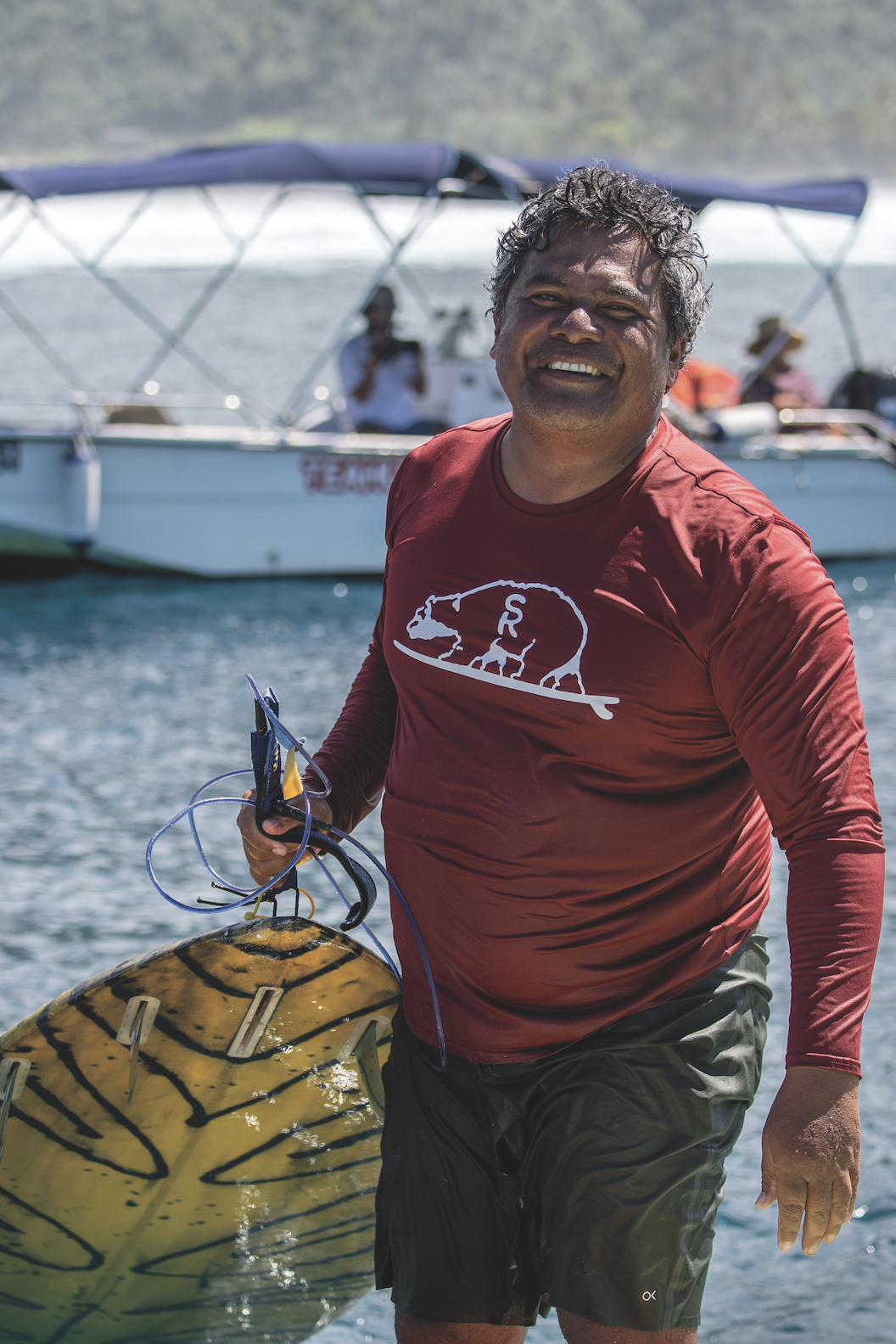
Born and raised in the capital of Papeete, he was one of the first locals to surf Chopes, and over the years, his intricate knowledge of the wave has earned him the nickname the Godfather of Teahupo’o. He was out in the channel with Hamilton the day the American had his historic ride, and John John Florence and Kelly Slater are among the surfers who stay with him when they’re in town. Van Bastolaer even did a stint as a part-time coach at Surf Ranch, Slater’s central California wave park. Thanks to his non-stop pursuit of a good time, everyone wants to be around him. Now 48, the stockily built, dauntingly athletic van Bastolaer has become the go-to guide for visitors ranging from Julia Roberts, Margot Robbie and Jason Momoa to Mark Zuckerberg and Prince Harry. “I get to yell at princes and CEOs,” he jokes. “I’m out in the water with them telling them when to pop up and paddle. And they love it.”
Tahiti’s unofficial ambassador lives and breathes surfing. Through his company, Raimana World, he takes just one or two guests at a time on private curated surf tours throughout French Polynesia’s two central archipelagoes: the Society Islands (which are home to Tahiti) and the Tuamotus; he plans to add Fiji soon. Some of his clients base themselves on their own yachts or charter one through Pelorus. The yacht specialist’s Tahiti portfolio includes the 77-metre La Datcha, which has two helipads, a submersible and a spa.
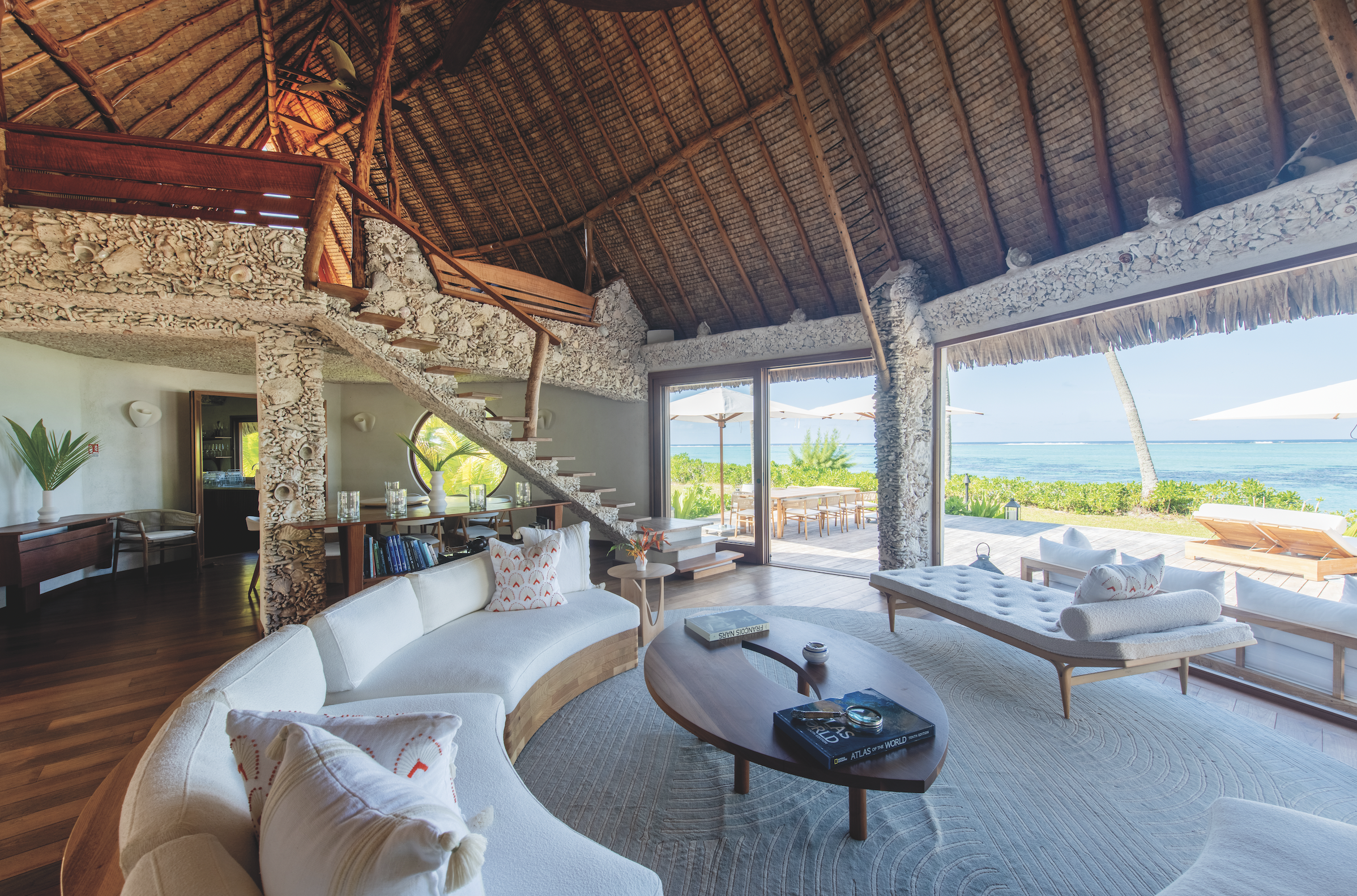
Other clients he directs to exclusive properties, such as Motu Nao Nao, a new 25-hectare private-island resort in the cerulean lagoon of Raiatea with just three enormous villas crafted from coral, wood, and shells. A roving bar bike delivers custom cocktails to guests as they explore the island, and the French chef, inspired by Asian and North African cuisine, prides himself on never repeating a dish, no matter how long guests stay.
Van Bastolaer gets only one or two clients a year experienced enough to be coached into a barrel at Teahupo’o. “Most just want to get close to the wave to feel its energy and hear it roar,” he says. “That’s enough to give you an adrenaline rush.” Locals are incredibly protective of their surf spots, and van Bastolaer stays away from popular breaks. “Out of respect, I don’t take clients out if there are more than a few people in the water. Luckily, I have access to toys that get us away from the crowds.” He island-hops by helicopter, yacht or jet boat, then transports guests to surf breaks via high-speed RIB (rigid inflatable boat) or jetski. Most days average two to three hours of surfing, and he sprinkles in other activities such as snorkeling, whale watching (July to November) and barbecues at his house.
Papara, the beautiful black-sand beach where van Bastolaer honed his skills, 45 minutes from Teahupo’o, will be turned into a fan viewing zone with jumbo screens during the Olympics. Papara is one of the most forgiving surf breaks in Tahiti, and I head here to longboard. La Plage de Maui, a simple restaurant with sandy floors, plastic chairs and lagoon vistas, becomes my daily après-surf spot. Located in West Taiarapu, 40 minutes east of Papara, with nothing but coastal road and local homes in between, this humble spot sits next to Maui Beach, one of the only white-sand beaches on the whole island. This stretch may be Tahiti Iti’s best-kept secret.
After a barefoot walk along the shore, I don’t bother to put my shoes back on before heading into the restaurant, where servers proudly sport Tahiti Pro T-shirts and posters of pros hang on the walls. At a waterfront table, I spot rainbow-hued parrotfish and Moorish idol in the glassy lagoon. I’m pretty sure I could live on a diet of local Hinano beer and poisson cru, Tahiti’s national dish of raw fish marinated in lime juice and coconut milk. My final day, I ask my waitress if she’s concerned the Olympics might overexpose this laid-back, oft-forgotten enclave. She just laughs in reply.
On the drive back to my villa, I remember what van Bastolaer told me when we were introduced a year ago: Tahiti Iti’s specialness is lost on those seeking overwater bungalows or nightlife. It’s a place you can’t know in a day. The island reveals itself to you slowly. And even when van Bastolaer is your host, he won’t give away all its secrets.
You may also like.
The Boldest, Most Exciting New Timepieces From Watches & Wonders 2024
Here are the highlights from the world’s biggest watch releases of the year.
Watches & Wonders, the world’s largest watch show, is in full swing in Geneva. The highly anticipated cascade of new releases is marked by confident individual brand identities — perhaps a sign that watchmakers are done scrambling through the violent collision of restricted supply and soaring demand for high end watches. All seem to be back on solid footing.
Steady confidence is a good thing. Consider Jaeger-LeCoultre offering up traditionally styled grand complications or Vacheron Constantin revamping the classic Patrimony with smaller cases and vintage-inspired radially brushed dials. Consider TAG Heuer celebrating the 55th anniversary of the square Monaco with a skeletonized flyback confidently priced at US$183,000, or Moser similarly showing off a fascinating skeletonized tourbillon in its distinctive 40 mm Streamliner at US$86,900. IWC has leaned hard into their traditionally styled Portugieser line, including an astounding Eternal Calendar complication. We find the storied French houses of Cartier, Chanel and Hermes blurring the lines between jewelry and watchmaking with the technical prowess and artistic whimsy that originally earned these brands their exalted place in the hearts and minds of sophisticated aesthetes. Confidence abounds in 2024.
We could go on and on with examples, but the watches below will demonstrate that for 2024 the big watch brands dared to be themselves, which appears to have given them the confidence to take some seriously compelling horological risks. We have separate coverage of off-show releases and, of course, Patek and Rolex, so keep and eye out for those.
—
A. Lange Söhne Datograph Perpetual Tourbillon Honeygold Lumen
Chanel Bobbin Cuff
You may also like.
By Jay Cheses
17/04/2024
13/04/2024
A Gucci Garden Blooms in Sydney
On a rainy Sydney night, the drinks talent from Maybe Sammy mixed with guest bartenders from Giardino 25 in Florence, for a night of liquid magic.
Since hanging out its shingle in 2022, Giardino 25, the all-day café and bar located in Gucci’s palatial, multidisciplinary space in Florence, has been a boon to stylish tipplers. Taking inspiration from one of its previous tenants (a longstanding florist), the garden-themed joint (Giardino is the Italian word for garden) serves delicious aperitivi and dangerously addictive cocktails.

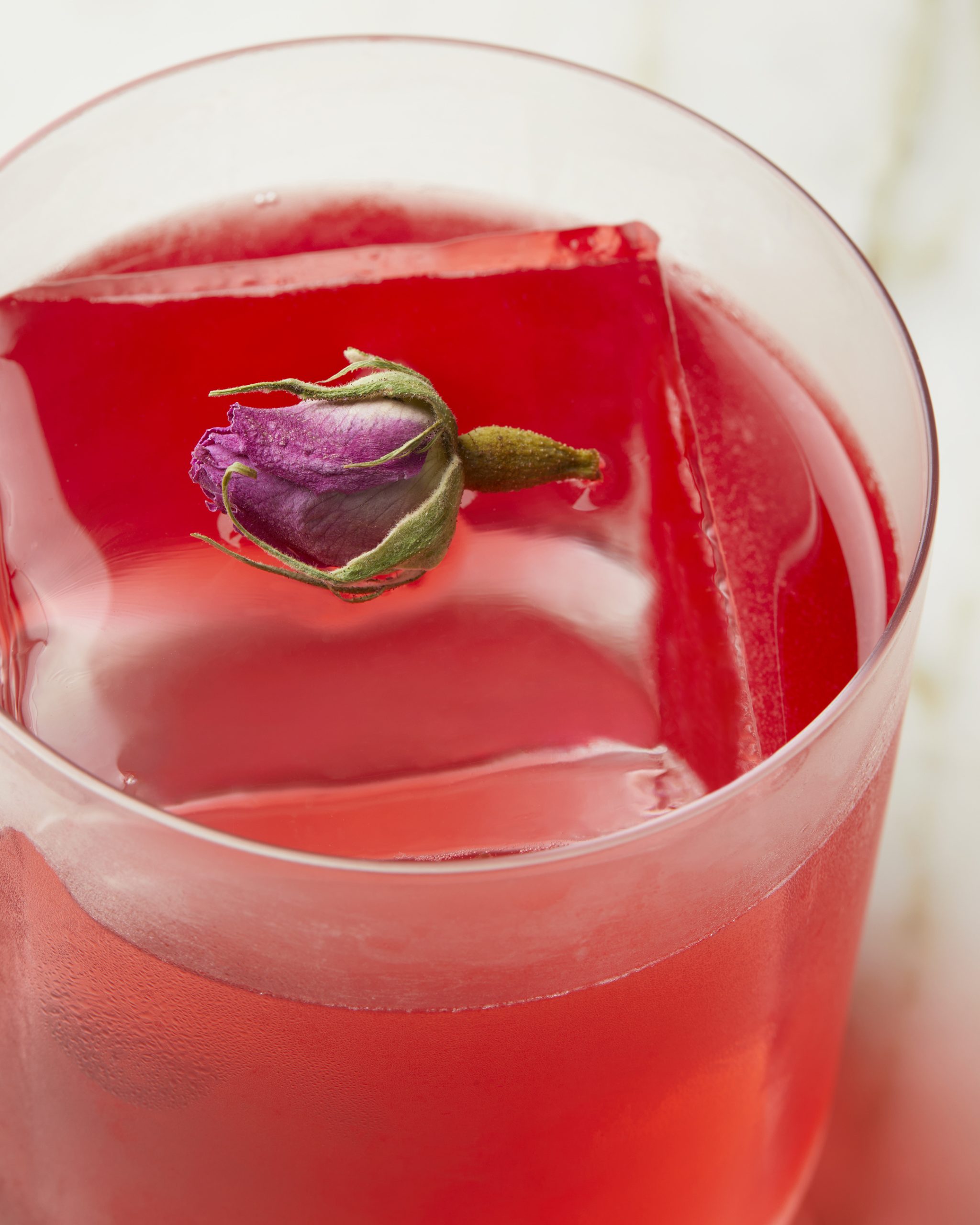
Giardino 25 took bloom this past Tuesday at a pop-up at El Primo Sanchez in Paddington. The Maybe Cocktail Festival in Sydney is a series of 20 events scattered throughout the city curated by the award-winning Sammy’s Cocktails team. The festival aims to spur knowledge-sharing and foster excellence in Australia’s drinks scene.
“Last year we held 16 events and they were all packed,” says Stefano Catino, director of hospitality at Public, the management company behind Maybe Sammy venues and bottled drinks, “so this year we’ve curated extra events and flown out even more international bars and bartenders.”
“Nineteen of the 21 events are free to attend, which is very important to us,” he continues. “The cost of living is high, and it’s very expensive for Australians to travel overseas, so this festival allows people to drink cocktails from an amazing bar in Rome or try a Tommy’s Margarita from the gentleman who created it without the cost of a plane ticket.”
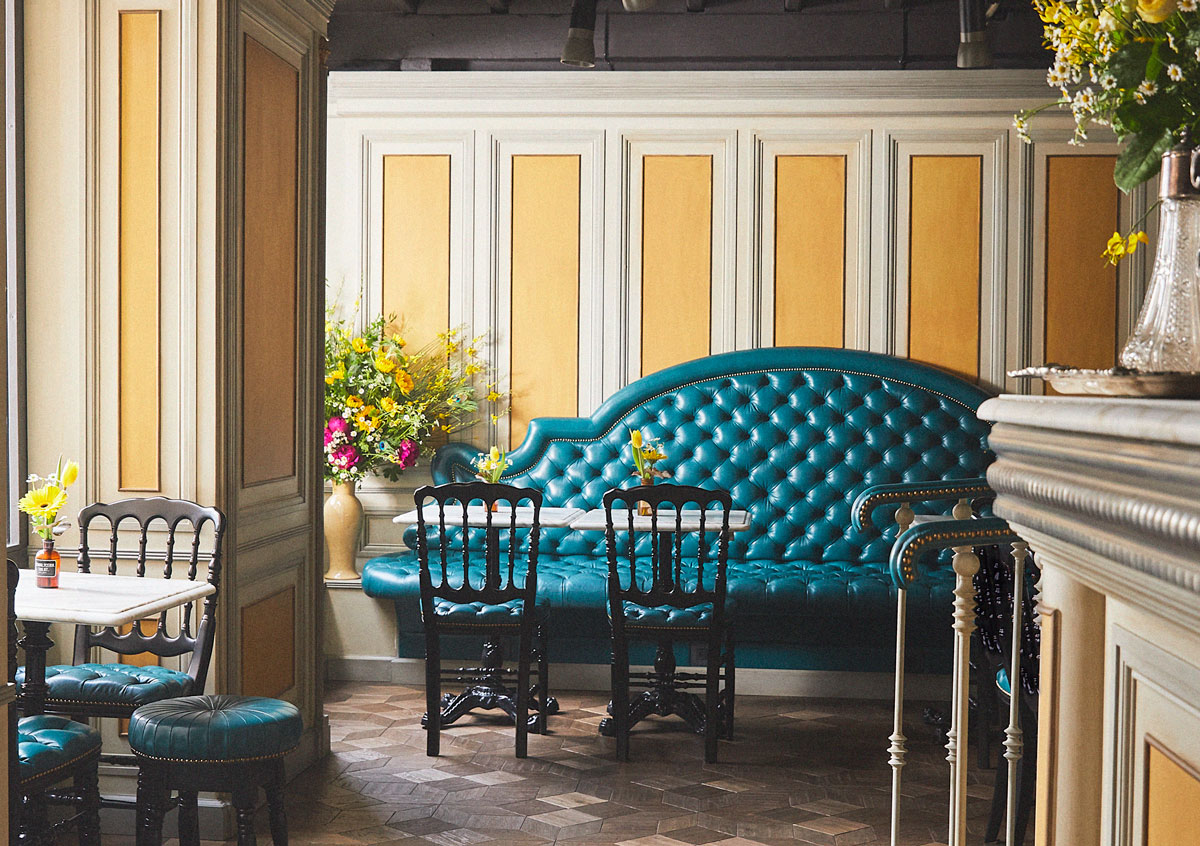
Dressed head to toe in Gucci, and using the bar as her personal catwalk, Giardino 25’s special guest, Martina Bonci, looked every bit the star behind the bar. “We have brought our mix of classic Italian influences and innovation,” she told Robb Report, “so guests in Australia get a little slice of what we do in Florence.”
Among her tantalising pours were powerful dirty martinis decorated with shimmering gold leaf and Aurora, a transparent twist on the Negroni.
Reflecting on her whirlwind trip down under, Bonci said their visit to Bondi Beach and the cocktails at Maybe Sammy were the highlights.
“The bartenders at Maybe Sammy are world-class,” she explained. “There is a good reason they win awards and have a respected reputation overseas. And El Primo Sanchez has such a fun atmosphere—we had a great night.”
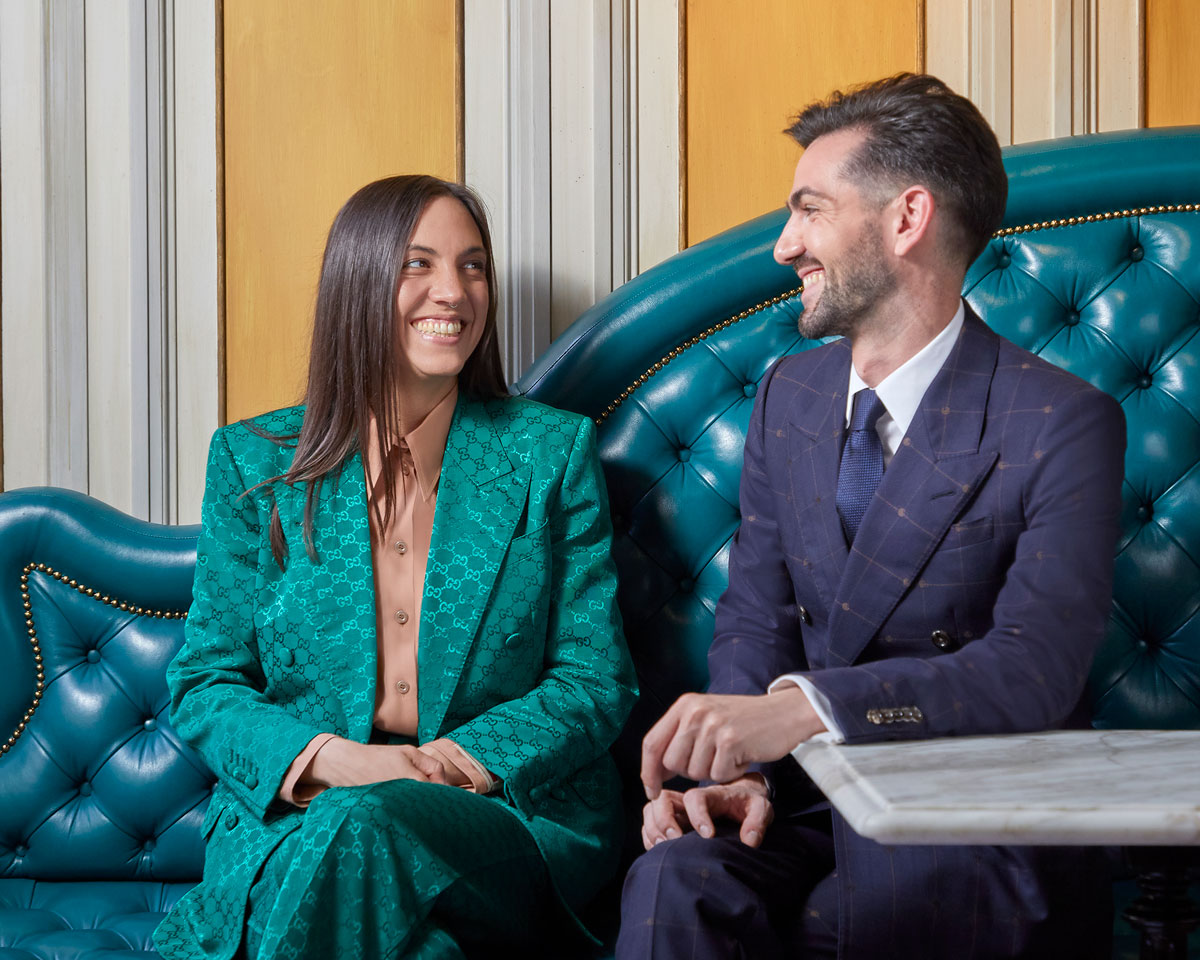
Bonci, who came to prominence in a long string at Milanese hipster joint Gesto and is known for her use of agave, favors drinks dripping with seasonal fruits and citrus flavors. Having tried her creations, we do, too.
She made a serious impression on Sydneysiders, who would do well to make a pilgrimage to see her in action on home turf. As if any of us need another reason to visit Italy.
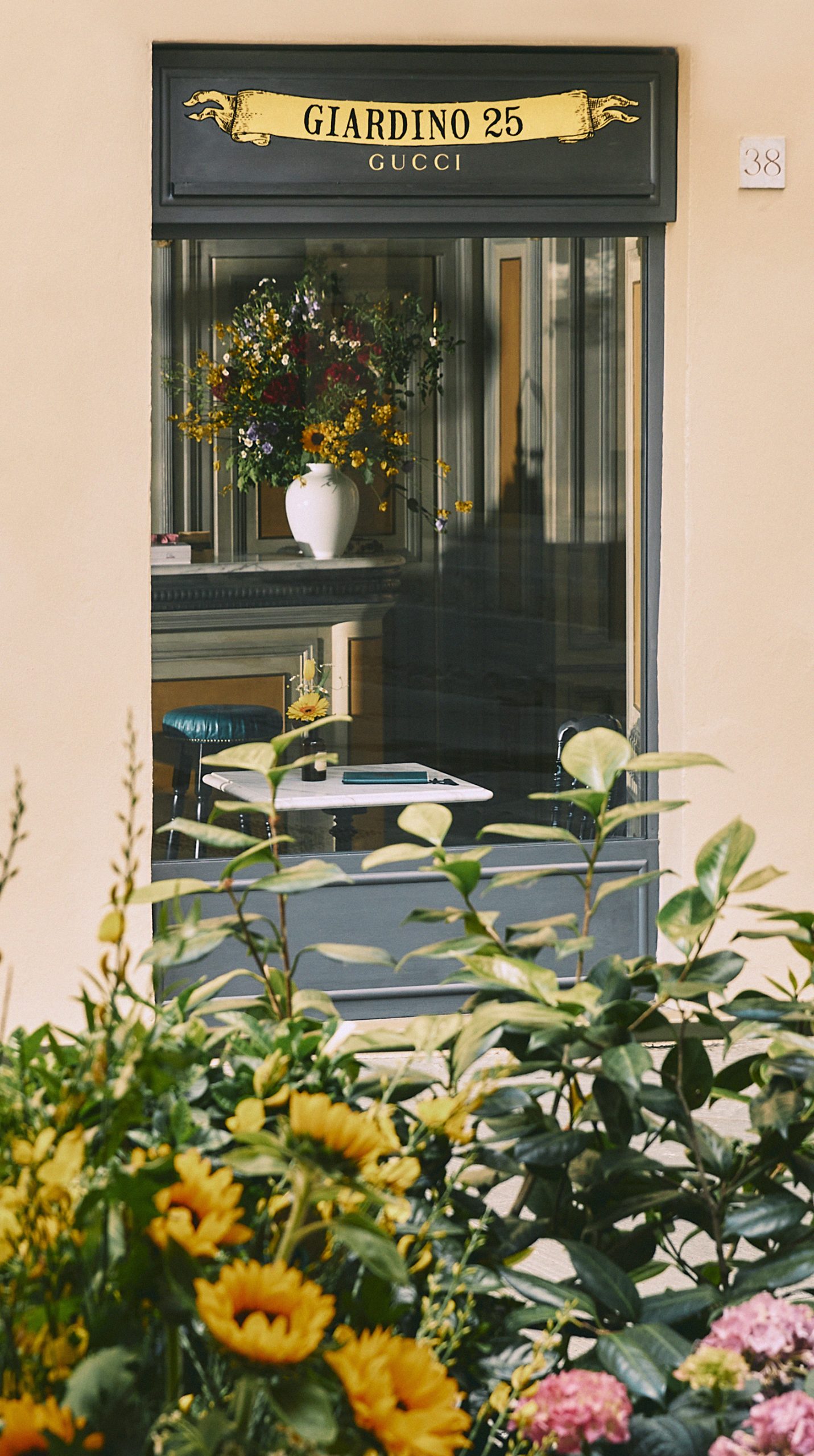
The Maybe Cocktail Festival, continues this weekend in Sydney, with the public welcome to attend a Bartenders Brunch at Sydney’s Alpha on Sunday from 11.00 am – 3.00 pm, hosted by George Calombaris.
View the program: Maybe Cocktail Festival @maybe_cocktail_fetsival
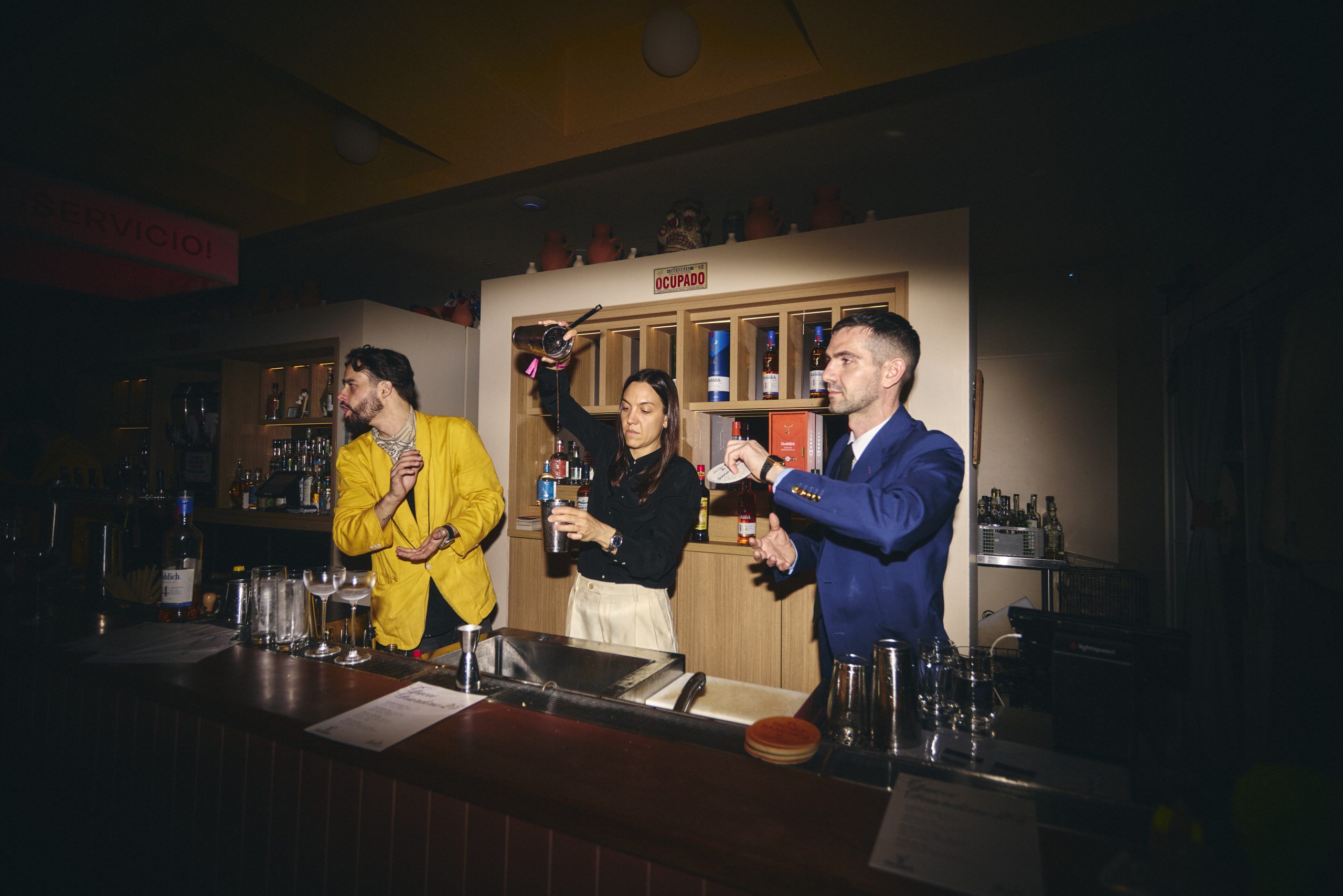
All images courtesy of Gucci.
You may also like.
By Jay Cheses
17/04/2024
Patek Philippe Brings Back Collector Favourites at Watches & Wonders 2024
Both the Nautilus Chronograph and Aquanaut Travel Time receive a welcome return.
If you’re a watch fan, there’s every reason to believe that a Patek Philippe Nautilus, Patek Philippe Aquanaut—or both—would be high on your wish list. Both collections are of historical significance, helping pave the way for the influence of the steel sports watch category—and subsequent chokehold on the market today.
So, when Patek Philippe unveiled its newest releases at Watches & Wonders in Geneva, it was a pleasant surprise to see the return of two of the best past iterations of the Nautilus and Aquanaut collections.
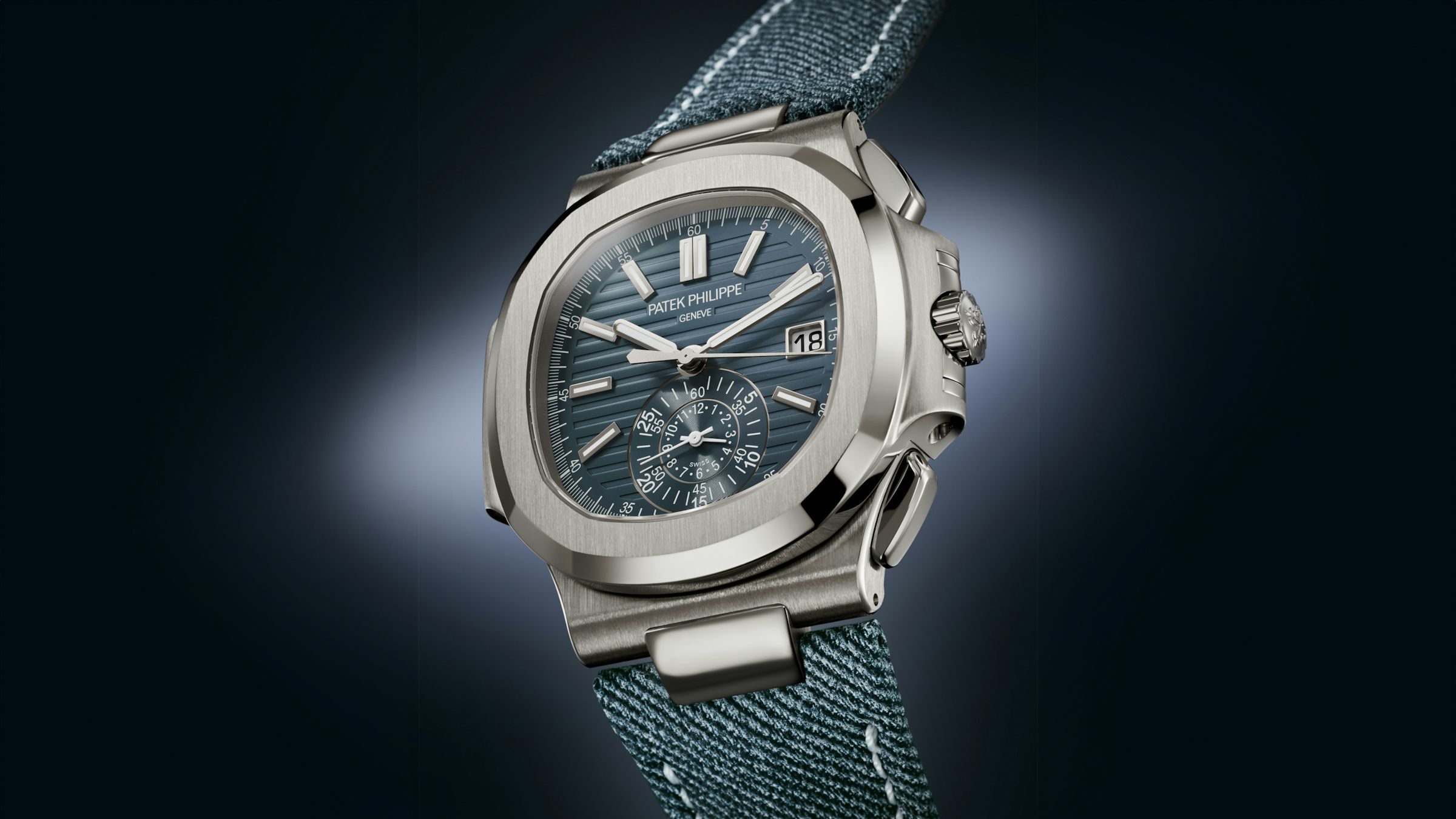
First, we get a new Nautilus Chronograph, with the return of the revered 5980, now replete with a new case in white gold and a denim-like strap (a contentious issue among watch pundits). Discontinuing all Nautilus 5980 models earlier this year, including the collector-favourite 5980/1AR in Rose Gold, left a sombre feeling among Nautilus fanatics. These celebrated chronographs, renowned for their distinctive porthole-inspired design and air of sporty elegance, are some of the most sought-after watches in the Patek Philippe catalogue. Thus, the revival of the 5980, now in white gold, is a cause for collectors’ celebration.
The new offering retains its chronograph function with mono-counter tracking 60-minute and 12-hour counter at 6 o’clock on the dial, but now comes on a new denim-inspired, hand-stitched fabric strap with a Nautilus fold-over clasp in white gold—some will love it, some won’t.
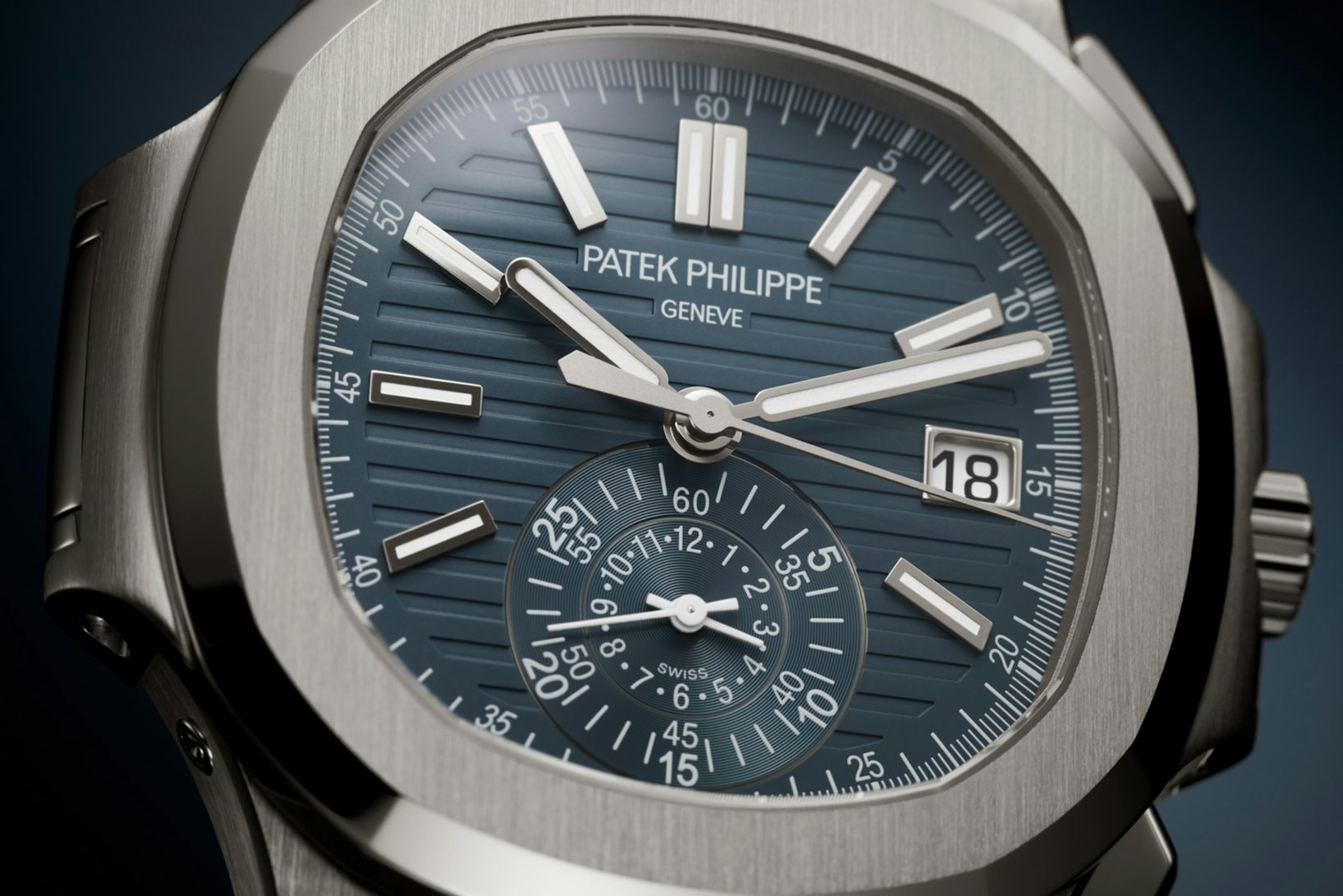
The Calibre CH 28‑520 C/522 powers this new Nautilus with its flyback chronograph, all of which is visible through the transparent sapphire crystal caseback. The dial is also incredibly eye-catching, with a beautiful opaline blue-gray hue accentuated by white gold-applied hour markers with a white luminescent coating. It is priced at approximately $112,000.
Also returning to the fold is the Patek Philippe Aquanaut Travel Time, now with its own bluish hue dial—similar to its Nautilus counterpart. After discontinuing the Aquanaut Travel Time 5164A this year, as well—a watch often regarded as the greatest Aquanaut to date—Patek Philippe surprised all with the new 5164G in white gold. Its greatest attribution is the clever Travel Time GMT function, which clearly rivals the Rolex GMT-Master II as perhaps the travel-friendly watch of choice (if acquiring one was that simple, of course).
For those who prefer the Aquanaut’s sportiness and easy-wearing rubber strap, this newest iteration, with its Opaline Blue-gray dial and matching rubber strap with a deployant clasp, is undoubtedly an icon in the making. The new 5164G has a 40mm case and features the Calibre 26‑330 S C FUS movement, which can also be viewed via the transparent sapphire crystal caseback.
Expect to pick up the new Aquanaut Travel Time for around $95,250.
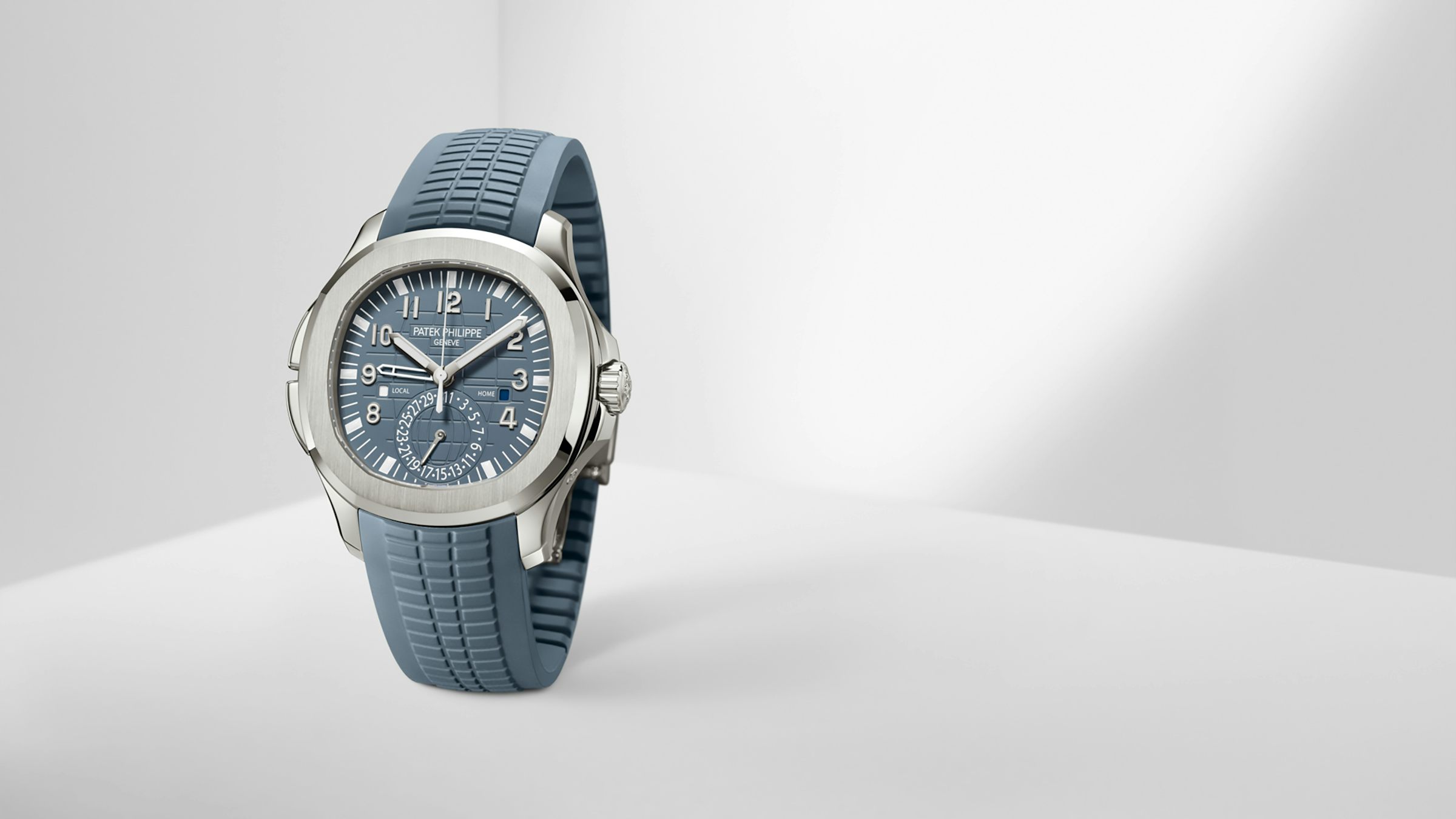
—
Follow @robbreportau for all your Watches & Wonders coverage, and more!
You may also like.
By Jay Cheses
17/04/2024
Rolex Kicks Off Watches & Wonders 2024 with a New GMT-Master II
The new stainless steel GMT-Master II has already been dubbed the “Bruce Wayne”.
It may not be the GMT that watch pundits were speculating on—or that collectors were hoping for—but the new Rolex GMT-Master II with a new grey and black ceramic bezel adds dazzle to the revered Rolex collection, which this year celebrates its 70th anniversary.
The idea of a new Rolex GMT launching at the world’s biggest watch fair is cause for a little madness. While the watch community eagerly awaited what was thought to be the discontinuation of the highly sought-after GMT “Pepsi” and the return of the GMT “Coke,” the luxury Swiss watchmaker had other plans.
Instead, we’re presented with a piece that, on paper, hasn’t changed much from previous GMT releases. That’s not to say that this isn’t an impressive release that will speak to consumers—the new GMT-Master II ref.126710GRNR, dubbed the “Bruce Wayne,” is definitely a sight for sore eyes.
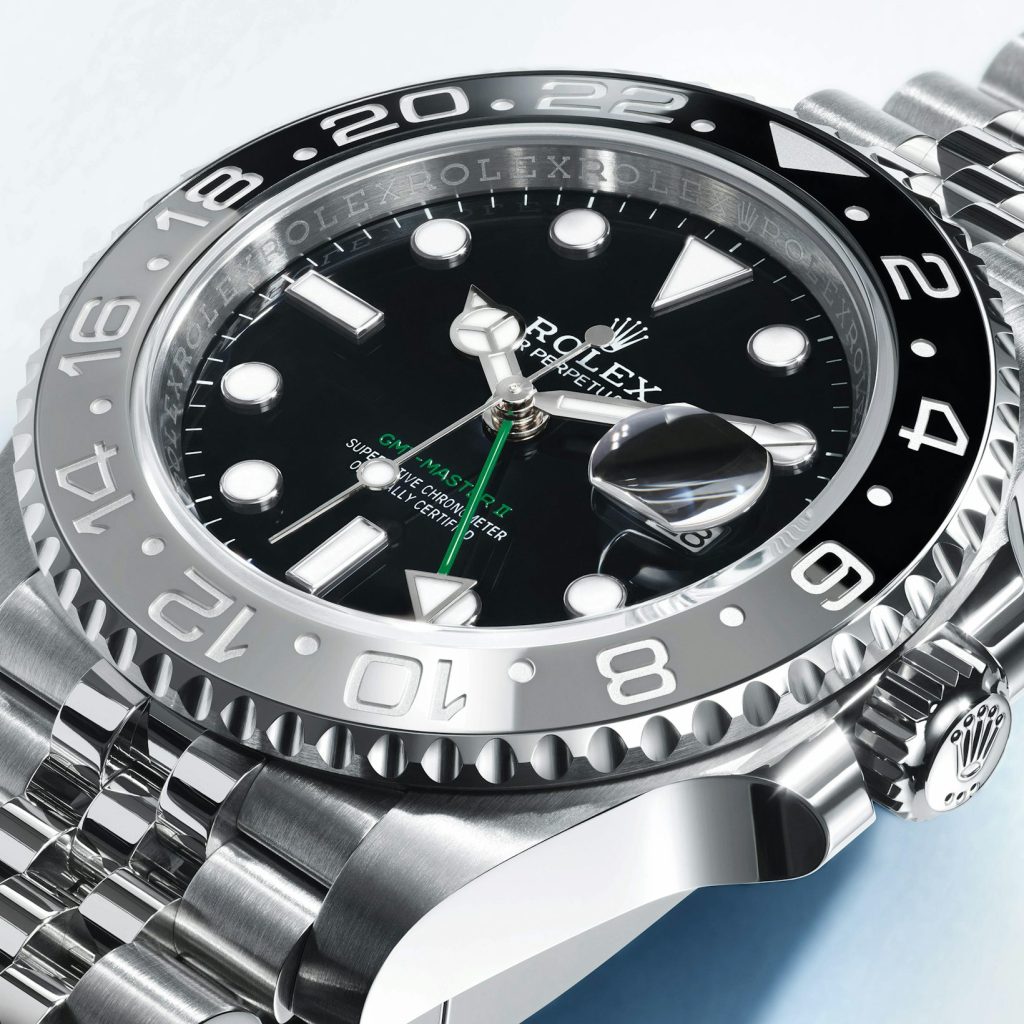
This new GMT retains the same dimensions and movement as the other watches in the GMT collection, along with its 40mm size case and the option to fit either an Oyster or Jubilee bracelet. The obvious changes, albeit subtle, come in the way of its mostly monochrome return; a fact that will appease traditionalists. If you’re opposed to the attention-drawing “Pepsi”, “Sprite”, or “Batman” iterations, this model is a stealthier pick—much like pseudonymous Bruce Wayne.
The other noticeable change is the “GMT-Master II” now applied in green text and a 24-hour hand in green; perhaps a nod to the 2007 Basel World GMT release.
Like many Rolex timepieces, this will generate great hype and attention, so don’t expect allocations to come easily.
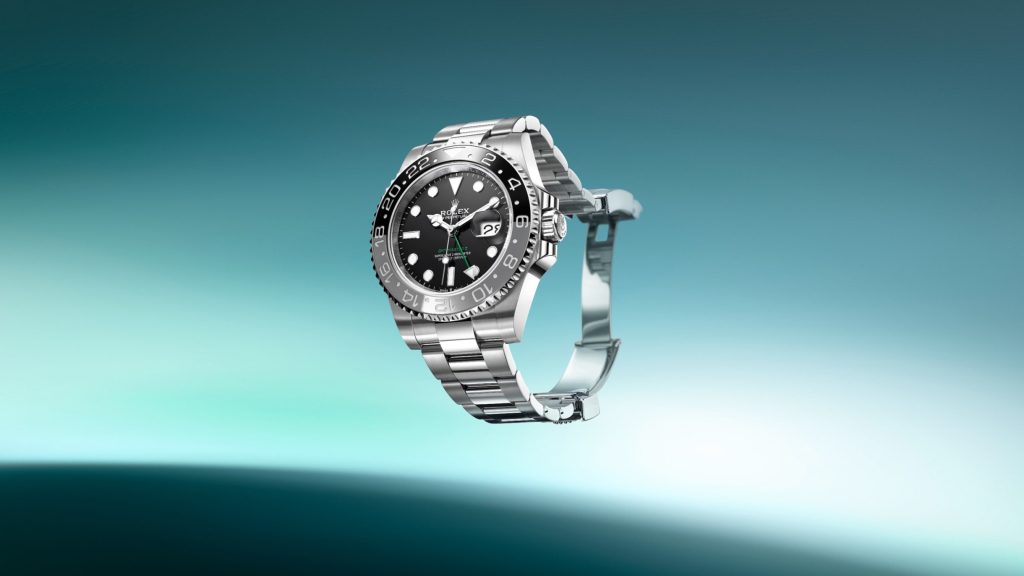
Model: GMT-Master II
Reference Number: 126710GRNR
Diameter: 40mm
Case Material: Stainless steel
Dial Colour: Black
Lume: Chromalight on hands and hour markers
Water Resistance: 100m
Bracelet: Oyster or Jubilee
Movement: Caliber 3285
Functions: Hours, minutes, seconds, date, GMT
Power Reserve: 70 hours
Winding: Automatic
Price: $17,150 (Oyster); $17,500 (Jubilee)
Availability: Now. Non-limited edition
You may also like.
By Jay Cheses
17/04/2024






